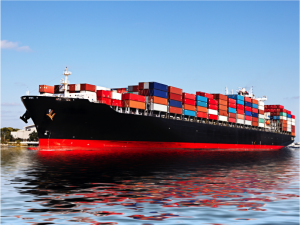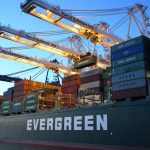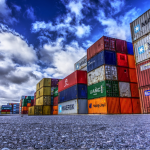Containerships & Optimism Return to Ocean Freight Market
 If you go on Facebook and scroll through, you’ll probably find a lot of people bemoaning 2020 as a terrible year. For ocean freight carriers, on the other hand, 2020 has been one of the greatest years in their history. Indeed, it’s continuing to get better for them, causing ocean freight shipping lines, which have had many years of struggle with profitability, to now have soaring confidence.
If you go on Facebook and scroll through, you’ll probably find a lot of people bemoaning 2020 as a terrible year. For ocean freight carriers, on the other hand, 2020 has been one of the greatest years in their history. Indeed, it’s continuing to get better for them, causing ocean freight shipping lines, which have had many years of struggle with profitability, to now have soaring confidence.
Despite depressed demand through the first half of the year because of novel coronavirus related shutdowns around the world, carriers managed to be very profitable by tightly controlling capacity, largely thanks to blank – or cancelled – sailings. In a Journal of Commerce (JOC) article, Greg Knowler shared Sea-Intelligence Maritime Consulting data that showed more than 400 sailings were cut from schedules in April and May. This helped carriers maintain general rate increases (GRIs) and keep freight rates high.
Also helping carriers increase profitability was the oil market crashing amidst the pandemic. Carriers’ costs decreased dramatically when it came to fuel bunkers, and this after already having charged shippers clean fuel surcharges for the implementation of IMO 2020, requiring ships to sail within a sulfur emission cap on fuel of 0.5%.
Now we’re in the peak season for international shipping, and despite predictions there would be no peak season this year because of COVID-19, cargo volume is surging. This is, of course, good news for carriers. They are now looking at the ocean freight market much more optimistically than early in the year. Their behavior shows it.
Idle Ships Put Back in Service
Carriers have reinstated cancelled services and they’re putting idle ships back on the water.
Mike Wackett reports in an article for the Loadstar:
Some 90 containerships, equating to over 600,000 teu of capacity, have found employment in the past month as carriers continue to reinstate blanked sailings and add extra loaders on routes.
The article highlights Alphaliner data of laid-up ships hitting an all-time high at the end of May, “during the peak of the pandemic,” of 551 idle ships, which had 2.72 million TEU (twenty-foot equivalent units) of capacity, representing 11.6% of the global fleet. Then at July 20th, there were 313 laid-up ships, which combined for a capacity of 1.56 million TEU for 6.6% of the world’s fleet.
That brings us to now, when employment of idle ships has continued and Mike Wackett reports Alphaliner as saying:
“The inactive containership fleet dipped below the 1m teu mark for the first time in 2020, as carriers resumed several suspended services on the Far East-North America and Far East-Europe routes. Shipping lines also reduced the number of planned skipped sailings and implemented summer peak season extra loops,” said Alphaliner.
Rising Capacity Raising Questions
Solid – if not strong – peak season demand and carrier confidence has the world’s biggest shipping companies adding capacity to international shipping routes again, which raises questions.
The beginning of 2020 showed carriers have the ability to control and reduce capacity to not only manage during drops in demand but also excel during them. However, when carriers become bullish with capacity in response to strong performance and increased demand, will they be able pull in the reigns and drop capacity quickly when demand drops? In the past, that has been a problem.
Not uncoincidentally, carriers have often undercut each other’s prices and made grabs for market share. Can they resist returning to this behavior?
Right now, freight rate prices are strong and demand is strong. What kind of dips will we see between now and October when the peak season typically ends? Adding capacity when times were good often led to crashing freight rates and large losses when market growth slowed. It will be interesting to watch carrier behavior and freight rates in relation to shipping demand through the end of 2020 and into 2021 to get some of the answers to the questions raised as capacity rises.




